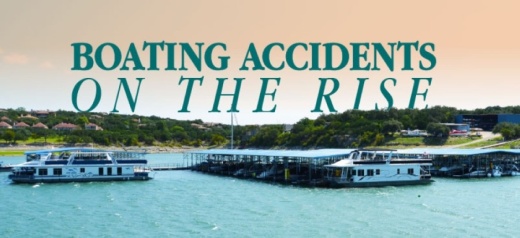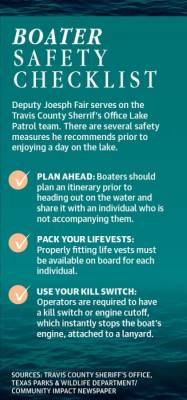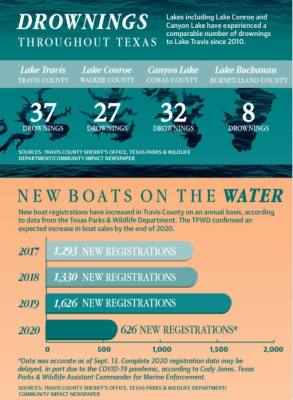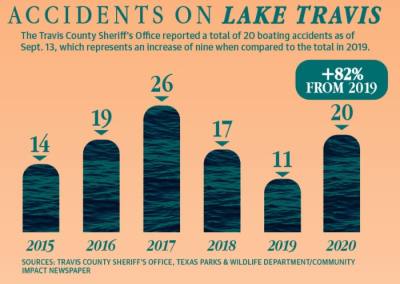In April, as coronavirus restrictions hit Central Texas, Watkins, the owner of Lakeway’s MarineMax Sail & Ski, closed his storefront, and his retail employees started working from home. To his surprise, he said sales, compared to the same period last year, had nearly doubled by the start of May.
His showroom traditionally housed about 25 boats, with another 75 displayed outside. By July, customers had cleared Sail & Ski’s entire inventory.
“People figured out that boating is one of the things they can do with their family and properly enjoy the outdoors and be socially distant,” Watkins said.
According to other outdoor recreation business owners, boating retailers are not the only industry experiencing a surge in sales. Over the past few months, the demand also grew for kayaks, canoes and paddle boards.
Tyler Forbes, a sales associate at Austin Canoe & Kayak’s New Braunfels location, said the company was bombarded with orders this summer, and it has been difficult to keep inventory stocked at its five locations in the Austin area.
The local boom in business is on par with both statewide and national trends. A Sept. 14 report from The National Marine Manufacturers Association stated 47% of marine manufacturers saw a year-over-year increase in new orders, and 15% reported substantial growth in sales.
Watkins also runs a marina on Lake Travis, which he said is operating at its highest capacity since at least 2005. Daily volume is not tracked on Lake Travis, and there are no capacity limitations on Texas’ waterways. Anecdotally, he said the lake is packed on a weekly basis.
Though Watkins said the current spike in sales was unprecedented, he noted he has witnessed an annual increase in boating interest throughout the state. Furthermore, as development and population continue to grow in the Lake Travis region, so does the lake’s popularity.
His claims are supported by Cody Jones, the Texas Parks & Wildlife Department’s assistant commander for marine enforcement. Jones said since the pandemic began, Texas saw a substantial increase in the volume of boaters and swimmers on the water.
However, there has also been a 68% increase in boating injuries statewide and a 55% increase in water incidents compared to last year, according to a Sept. 4 TPWD news release.
“We have seen a boost in the number of Texans on the water this year and, with that unfortunately, has come a sharp increase in the number of water incidents,” Jones said. “Due in part to the public health crisis, more boats and younger, less experienced operators have decided to hit the Texas waterways.”
Jones said he has been emphasizing safety precautions in light of the recent spike in boating interest. Boating, Jones said, is not inherently dangerous when done correctly, and a little education can greatly benefit new and veteran boaters.
Accidents on the water
Lake Travis has seen a comparable rise in accidents on the water, according to data from the Travis County Sheriff’s Office. As of Sept. 13, the sheriff's office had reported 20 boating accidents on the lake this year—an 82% increase from the total accidents in 2019.
However, TCSO Lake Patrol Deputy Joseph Fair does not necessarily attribute the increase in accidents to a booming boat industry. He said annual accident and drowning rates are cyclical—some years are just higher than others. For example, the TCSO reported 26 boating accidents in 2017 and just 17 accidents the following year.
“Last year the lake was full; there were a lot of boats out; but we didn’t have very many incidents,” Fair said. “This year we’ve probably had a few more [boating incidents].”
The same holds true for annual drownings, per the TCSO’s data. Four individuals have drowned at Lake Travis this year compared to three in 2019 and seven in 2018.
Despite a somewhat natural rise and fall in annual incidents and drownings, there are several factors that can contribute to accident rates, according to Jones, who said alcohol consumption remains the leading contributing factor to fatal boat accidents in Texas.
“Whether you’re the operator or the passenger on the boat, you need to be cautious about your alcohol consumption,” Jones said, adding it increases an individual’s risk of drowning by nearly 50%.
Nationally, alcohol was the primary cause of about 23% of drownings, as reported by the U.S. Coast Guard’s 2019 recreational boating statistics study. Out of the 37 drownings that have occurred on Lake Travis as reported by the TPWD since 2010, at least five involved alcohol.
Water levels can also play a role in safety on the lake, Jones said, adding that levels on Lake Travis can fluctuate dramatically compared to neighboring waterways. Texas’ driest year on record was 2011, and low lake levels forced boaters to use smaller areas, according to Jones, who said the sheer density of boats on the water led to a rise in accidents.
In contrast, a higher lake level can carry its own risk. Lake Travis is essentially a flooded canyon with a maximum depth of around 200 feet, according to a Sept. 29 Lower Colorado River Authority report. When the lake is full, Jones said deep drop offs, sandbars and holes caused by sediment erosion are often disguised.
The geographic nature of Lake Travis can also make waves and boat wakes worse, according to Jones. On one side, the lake is bordered by a section of natural cliffs and on the other, a steep bank built up by marinas. “Those waves just start coming from every which direction, and it’s like a washing machine or a kid playing in a tub,” Jones said.
New or out-of-town boaters are often unfamiliar with Lake Travis’ unique geography. Jones said, without practicing necessary caution, those boaters could be at greater risk.
Jones said it is incumbent upon all boaters to operate in a safe and judicious manner.
Preventing loss of life
With the interest in boating and outdoor recreation continuing to grow, Jones, Fair and Watkins are working to ensure residents take safety seriously. Boat operators born after Sept. 1 1993 must complete a boater education course through TPWD, however, Fair said the course can be beneficial for all new boaters.
Local boat retailers such as Sail & Ski also provide instructional guidance for new buyers, according to Watkins, who said as Texas moves into the fall and Lake Travis sees fewer daily boaters it’s the perfect time to learn the basics.
“We hold boating and outdoor recreation near and dear as a department and as Texans, and we want to see everybody enjoy our outdoors, but we want them to do it safely,” Jones said. “With the new desire for people to get outdoors, a little bit of education goes a long way.”









